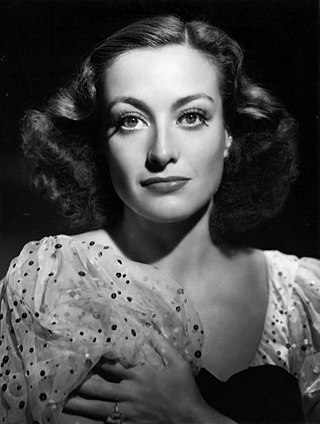
Joan Crawford was an American actress. She started her career as a dancer in traveling theatrical companies before debuting on Broadway. Crawford was signed to a motion picture contract by Metro-Goldwyn-Mayer in 1925. Initially frustrated by the size and quality of her parts, Crawford launched a publicity campaign and built an image as a nationally known flapper by the end of the 1920s. By the 1930s, Crawford's fame rivaled MGM colleagues Norma Shearer and Greta Garbo. Crawford often played hardworking young women who find romance and financial success. These "rags-to-riches" stories were well received by Depression-era audiences and were popular with women. Crawford became one of Hollywood's most prominent movie stars and one of the highest paid women in the United States, but her films began losing money. By the end of the 1930s, she was labeled "box office poison".

Émilie Chauchoin, professionally known as Claudette Colbert, was an American actress. Colbert began her career in Broadway productions during the late 1920s and progressed to films with the advent of talking pictures. Initially contracted to Paramount Pictures, Colbert became one of the few major actresses of the period who worked freelance; that is to say, independently of the studio system.
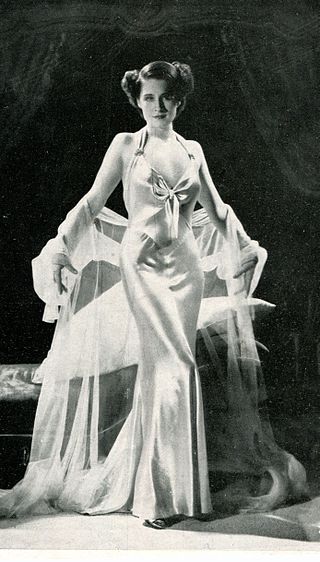
Edith Norma Shearer was a Canadian-American actress who was active on film from 1919 through 1942. Shearer often played spunky, sexually liberated women. She appeared in adaptations of Noël Coward, Eugene O'Neill, and William Shakespeare, and was the first five-time Academy Award acting nominee, winning Best Actress for The Divorcee (1930).

Greta Garbo was a Swedish-American actress and a premier star during Hollywood's silent and early golden eras. Regarded as one of the greatest screen actresses of all time, she was known for her melancholic and somber screen persona, her film portrayals of tragic characters, and her subtle and understated performances. In 1999, the American Film Institute ranked Garbo fifth on its list of the greatest female stars of classic Hollywood cinema.
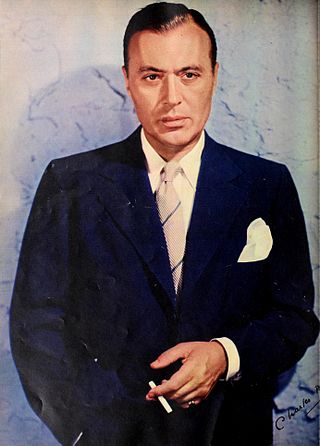
Charles Boyer was a French-American actor who appeared in more than 80 films between 1920 and 1976. After receiving an education in drama, Boyer started on the stage, but he found his success in American films during the 1930s. His memorable performances were among the era's most highly praised, in romantic dramas such as The Garden of Allah (1936), Algiers (1938), and Love Affair (1939), as well as the mystery-thriller Gaslight (1944). He received four Oscar nominations for Best Actor. He also appeared as himself on the CBS sitcom I Love Lucy.

Dorothy Hackett McGuire was an American actress. She was nominated for the Academy Award for Best Actress for Gentleman's Agreement (1947) and won the National Board of Review Award for Best Actress for Friendly Persuasion (1956). She starred as the mother in the popular films Old Yeller (1957) and Swiss Family Robinson (1960).

John Gilbert was an American actor, screenwriter and director. He rose to fame during the silent era and became a popular leading man known as "The Great Lover". His breakthrough came in 1925 with his starring roles in The Merry Widow and The Big Parade. At the height of his career, Gilbert rivaled Rudolph Valentino as a box office draw.
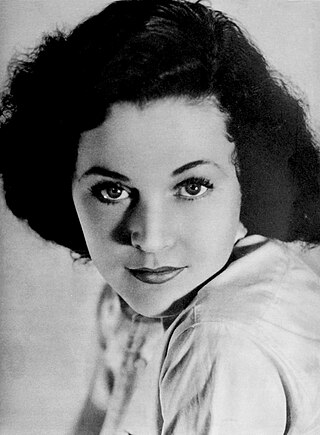
Maureen Paula O'Sullivan was an Irish actress who played Jane in the Tarzan series of films during the era of Johnny Weissmuller. She starred in dozens of feature films across a span of more than half a century and performed with such stars as Laurence Olivier, Greta Garbo, Fredric March, William Powell, Myrna Loy, Marie Dressler, Wallace Beery, Lionel Barrymore, the Marx Brothers and Woody Allen. In 2020, she was listed at number eight on The Irish Times list of Ireland's greatest film actors.

Jean Harlow was an American actress. Known for her portrayal of "bad girl" characters, she was the leading sex symbol of the early 1930s and one of the defining figures of the pre-Code era of American cinema. Often nicknamed the "Blonde Bombshell" and the "Platinum Blonde", Harlow was popular for her "Laughing Vamp" screen persona. Harlow was in the film industry for only nine years, but she became one of Hollywood's biggest movie stars, whose image in the public eye has endured. In 1999, the American Film Institute ranked Harlow number 22 on its greatest female screen legends list.
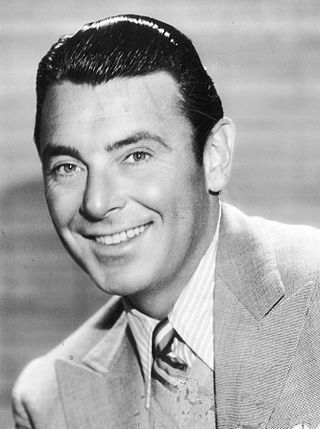
George Brent was an Irish-American stage, film, and television actor. He is best remembered for the eleven films he made with Bette Davis, which included Jezebel and Dark Victory.
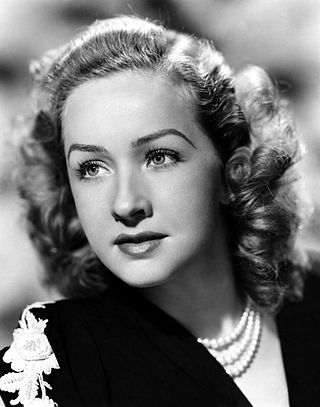
Bonita Gloria Granville Wrather was an American actress and producer.

Herbert Brough Falcon Marshall was an English stage, screen, and radio actor who starred in many popular and well-regarded Hollywood films in the 1930s and 1940s. After a successful theatrical career in the United Kingdom and North America, he became an in-demand Hollywood leading man, frequently appearing in romantic melodramas and occasional comedies. In his later years, he turned to character acting.

Queen Christina is a pre-Code Hollywood biographical film, produced for Metro-Goldwyn-Mayer in 1933 by Walter Wanger and directed by Rouben Mamoulian. It stars Swedish-born actress Greta Garbo and John Gilbert in their fourth and last film together.

Anna Karenina is a 1935 Metro-Goldwyn-Mayer film adaptation of the 1877 novel Anna Karenina by Leo Tolstoy and directed by Clarence Brown. The film stars Greta Garbo, Fredric March, Basil Rathbone, and Maureen O'Sullivan. There are several other film adaptations of the novel.

Charlotte Susa was a German actress.

Smilin' Through is a 1932 American pre-Code MGM romantic drama film based on the 1919 play of the same name written by Jane Cowl and Jane Murfin under the pseudonym of Allan Langdon Martin. It was adapted from the play by James Bernard Fagan, Donald Ogden Stewart, Ernest Vajda and Claudine West. The film was directed by Sidney Franklin and stars Norma Shearer, Fredric March, Leslie Howard and Ralph Forbes.

Edith Marilyn Fellows was an American actress who became a child star in the 1930s. Best known for playing orphans and street urchins, Fellows was an expressive actress with a good singing voice. She made her screen debut at the age of five in Charley Chase's film short Movie Night (1929). Her first credited role in a feature film was The Rider of Death Valley (1932). By 1935, she had appeared in over twenty films. Her performance opposite Claudette Colbert and Melvyn Douglas in She Married Her Boss (1935) won her a seven-year contract with Columbia Pictures, the first such contract offered to a child.

Black Moon is a 1934 American pre-Code horror film directed by Roy William Neill and starring Jack Holt, Fay Wray, and Dorothy Burgess. It is based on a short story by Clements Ripley that first appeared in Hearst's International-Cosmopolitan. The film centers on a young woman who returns to the tropical island where her parents were murdered during a voodoo ritual with her daughter and nanny, only to become corrupted by the native's dark rituals.

Marilyn Knowlden is an American former child actress. She started appearing in Hollywood films in 1931 when she was four years old. She established herself as a freelancer who worked frequently at different major film studios throughout the decade, being cast in films such as Imitation of Life, Les Misérables, and Angels with Dirty Faces. She worked with film stars such as Katharine Hepburn, James Cagney, and Claudette Colbert. In total, six of the films in which she appeared were nominated for an Academy Award for Best Picture, all within the span of seven years.
Harry Ruskin was an American screenwriter and lyricist. He worked for a variety of Hollywood studios over the course of several decades. For MGM he co-wrote several entries in the Andy Hardy and Dr. Kildare series.




















